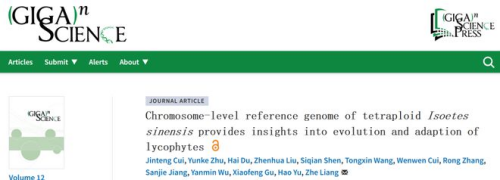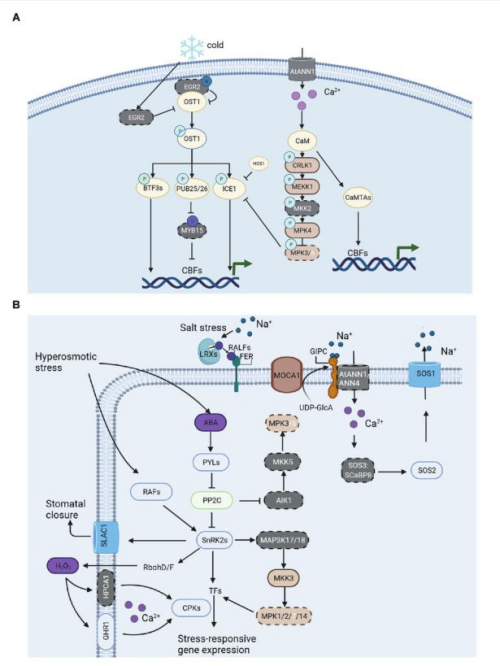Recently, teachers and students from Beijing University of Agriculture (BUA) and Biotechnology Research Institute, CAAS jointly published a research paper titled "Chromosome-level Reference Genome of TetraploidIsoetes Sinensisprovides Insights into Evolution and Adaption of Lycophytes" in the well-known academic journalGigaScience(IF 9.2). This study mapped the high-quality genome of Isoetes sinensis for the first time, which is also the first reported tetraploid genome assembled at the chromosome level for a non-seed plant. This study provides an important basis for further analyzing the evolution and environmental adaptability of lycopods and the protection of Isoetes sinensis. BUA is the first author's organization. Cui Jinteng, a senior laboratory technician of theSchool of Landscape Architecture, BUA and Zhu Yunke, a visiting graduate student at the Biotechnology Research Institute, CAAS and Beijing Glbizzia Biotechnology Co., Ltd, are the first authors of the paper. Liang Zhe, a researcher at the Biotechnology Research Institute, CAAS, is the corresponding author of the paper. Shen Siqian, Wang Tongxin and Cui Wenwen, undergraduate students of College of Forestry, BUA, participated in this research.

Isoetes sinensis is considered the "Giant Panda of the Plant World" and is one of the first batch of Class I key protected wild plants announced in China. It is also a lycophyte plant unique to China. Lycophytes have the longest evolutionary history of all vascular plant groups and have had an important impact on Earth's biodiversity, soil formation, and carbon dioxide sequestration. However, compared with seed plants, the distribution area of lycopods has been greatly reduced, and several species of lycopods are endangered. Isoetes sinensis is an ancient tetraploid (2n = 4x = 44) aquatic lycophyte. Isoetes sinensis was once widespread but has now disappeared from most of its habitat. The mapping of the genome of Isoetes sinensis is of great significance for a deeper understanding of the evolution and environmental adaptability of lycopods, as well as the protection of Isoetes sinensis.

This study combined Gen2 and Gen3 genome sequencing and Hi-C data to assemble a 2.13 Gb tetraploid genome of Isoetes sinensis containing 22 chromosomes, with a scaffold N50 of 86.66 Mb. Through comparative analysis with the closely related diploid Isoetes formosanus, the characteristics of the tetraploid genome and polyploidy of lycopodiformes as well as the similarities and differences in the sedan acid metabolic pathways and stomatal development between Isoetes sinensis and Isoetes taiwanensis DeVol were revealed. Through comparative analysis with representative species in evolution, it was found that Isoetes sinensis has some common genetic regulatory characteristics, such as transcriptional regulation, abscisic acid, cytokinin, ethylene, jasmonic acid and gibberellin signaling pathways. On the other hand, some important genes involved in strigolactone, salicylic acid metabolism and stress response (cold, drought, salinity and cadmium) were found to be "lost" in Isoetes sinensis and many lycopod plants. These findings provide new insights into the development of lycopods and their adaptability to adverse stresses, and offer important information for the conservation of Isoetes sinensis.

